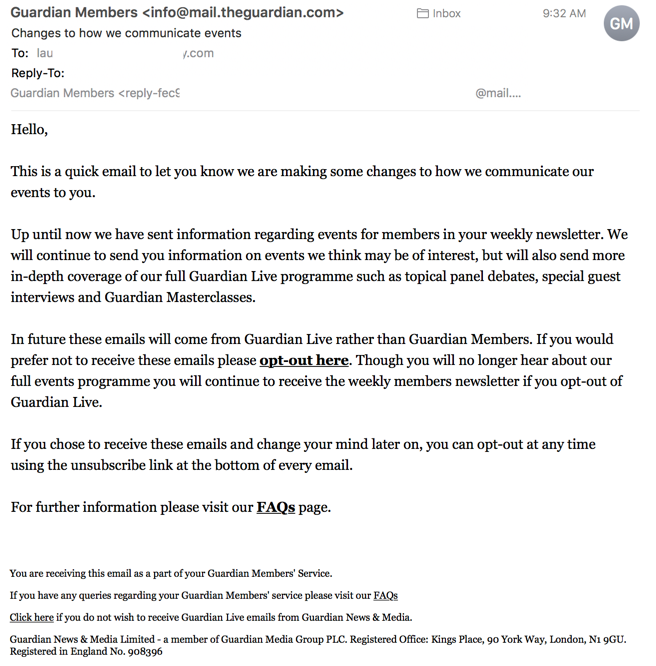Transparency
Subscription transparency
I regularly tell clients to be transparent with their sends. With email, permission is better than forgiveness. A surprise change in mail frequency or type leads to complaints. Complaints lead to bulk foldering. Once mail is in the bulk folder, it’s hard to get out of there, particularly at some webmail providers.
The permission is better than forgiveness is hard for a lot of senders to understand. Much of marketing is about assuming the yes in the absence of a no. Sure, they’ll back off when there’s a no, in DMA terms it’s the “one bite at the apple rule.” Unfortunately for senders the one bite rule doesn’t work in the email space.
There are a couple reasons that permission is better than forgiveness in the email space. The biggest is that the ISPs own the mailbox and as the owners they make decisions about who gets access. They prioritize the wants and needs of their customers / users over the wants and needs of advertisers. It’s easy for users to give feedback; in many cases they just have to hit a button. But that’s another whole blog post.
Today I get an email from The Guardian. They’re modifying and expanding their newsletter program, so they sent subscribers an update about it.
Transparency in sending
Al has a post listing some of the bad things some sender representatives do when approaching ISPs for delisting.
One of the things I would add to the list is hiding behind a privacy protected domain registration. No matter how you dice it, having a business domain behind privacy protection makes a company look illegitimate. For any company sending commercial mail, it’s not even an issue as senders are required by law to include an address in every email. With this sort of requirement, it’s not like customers aren’t going to be able to find them.
This is an issue I feel so strongly about, I will not represent senders to ISPs unless they have a valid, unprotected whois registration. I do offer consulting and other services to them, but will not contact the ISPs on their behalf. This is not the reputation I want to create with the ISPs for myself or my other clients.
I challenge anyone who is running a business and using a whois privacy protection service to put the same address in their whois record as is on every email you send out.
I challenge ISPs to stop offering whitelisting, FBL or other services to senders who insist on using whois privacy services.